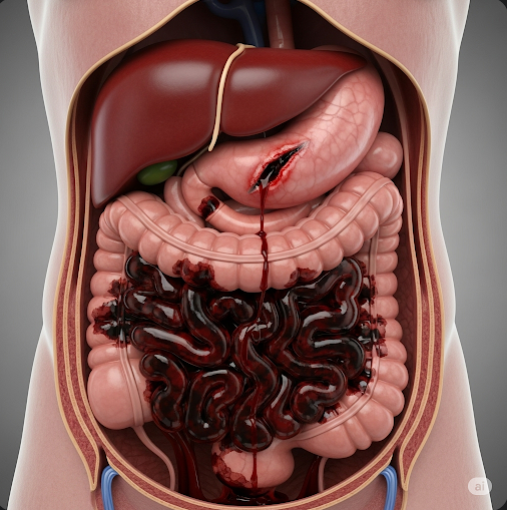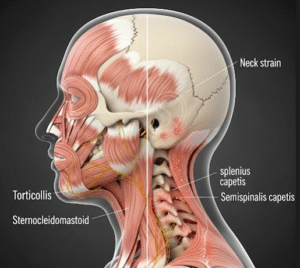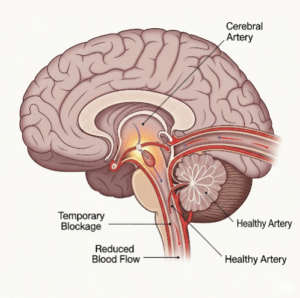Overview
Internal bleeding, medically known as internal hemorrhage, is a serious condition characterized by bleeding that occurs inside the body, within organs, tissues, or body cavities, rather than through an external wound. Unlike external bleeding, which is often visible and easier to identify, internal bleeding can be hidden and more difficult to detect, making it potentially life-threatening if not recognized and treated promptly. It can arise from a variety of causes including trauma, medical conditions, or complications from surgery or medication.
In South Korea, healthcare facilities are equipped with advanced diagnostic tools and emergency care systems that facilitate the rapid identification and treatment of internal bleeding, significantly improving patient outcomes. Hospitals in Korea also utilize minimally invasive techniques and multidisciplinary approaches to manage this critical condition effectively.
What is Internal Bleeding?
Internal bleeding refers to the escape of blood from blood vessels into the inside of the body. The blood can accumulate in spaces such as the chest cavity (hemothorax), abdominal cavity (hemoperitoneum), brain (intracranial hemorrhage), muscles, or joints. The severity of internal bleeding depends on the amount of blood lost and the site of the hemorrhage.
Internal bleeding can be classified broadly into:
- Acute internal bleeding — sudden and often caused by trauma, such as car accidents or falls.
- Chronic internal bleeding — slow and ongoing bleeding due to medical conditions like ulcers or tumors.
Because the bleeding occurs inside the body, symptoms might be subtle initially but can rapidly worsen, leading to shock or organ failure.
Symptoms
Symptoms of internal bleeding vary depending on the location and severity of the hemorrhage but generally include:
- Pain and tenderness in the affected area, often severe if bleeding occurs in muscles or joints.
- Swelling or distension of the abdomen or other parts of the body.
- Bruising or discoloration of the skin in the affected region, sometimes referred to as a hematoma.
- Weakness, dizziness, or fainting due to loss of blood volume.
- Rapid heartbeat and low blood pressure, signs of hypovolemic shock in severe cases.
- Shortness of breath if bleeding occurs in the chest cavity.
- Nausea or vomiting blood if bleeding is from the gastrointestinal tract.
- Blood in stool or urine when internal bleeding affects the digestive or urinary systems.
- Confusion, headache, or loss of consciousness if bleeding occurs inside the brain.
Early recognition of these symptoms is critical, especially when there is a history of trauma or underlying health conditions that increase bleeding risk.
Causes
Internal bleeding can be caused by a wide range of factors:
- Trauma: The most common cause is physical injury from vehicle accidents, falls, sports injuries, or violence.
- Medical conditions: Ulcers, cancers, aneurysms, arteriovenous malformations, or blood vessel disorders can cause spontaneous internal bleeding.
- Medications: Blood thinners (anticoagulants) like warfarin or aspirin increase bleeding risk, especially after minor injuries.
- Surgical complications: Internal bleeding can occur as a complication following surgeries or invasive procedures.
- Bleeding disorders: Conditions like hemophilia or thrombocytopenia impair blood clotting and increase bleeding risk.
- Liver disease: Cirrhosis can cause varices (enlarged veins) that rupture and bleed internally.
- Infections: Certain infections can damage blood vessels and cause bleeding.
Risk Factors
Individuals more prone to internal bleeding often have one or more of the following:
- Use of anticoagulant or antiplatelet medications to prevent blood clots.
- Chronic illnesses such as liver disease, cancer, or blood disorders.
- Advanced age, where blood vessels become fragile and trauma has more severe consequences.
- Alcohol abuse, which can damage the liver and blood vessels.
- Recent surgery or invasive medical procedures.
- History of previous bleeding episodes or trauma.
- Uncontrolled hypertension can increase the risk of blood vessel rupture, especially in the brain.
Complications
Internal bleeding can rapidly become life-threatening, leading to:
- Hypovolemic shock due to severe blood loss, causing inadequate blood flow to vital organs.
- Organ failure if bleeding affects kidneys, liver, lungs, or brain.
- Permanent neurological damage or death if bleeding occurs in the brain.
- Infections if blood collects in body cavities and becomes infected.
- Anemia from chronic bleeding requiring blood transfusions or iron therapy.
- Need for emergency surgery or invasive procedures to control hemorrhage.
Prevention
While not all internal bleeding can be prevented, certain measures reduce risk:
- Avoiding risky activities without protective gear.
- Careful management and monitoring when on blood-thinning medications, including regular blood tests in Korea’s advanced medical labs.
- Proper control of chronic illnesses such as hypertension and liver disease.
- Avoiding alcohol abuse and maintaining a healthy lifestyle.
- Early treatment of ulcers, cancers, and other medical conditions.
- Awareness and education on recognizing signs of internal bleeding for early medical consultation.
Treatment Options in Korea
Diagnosis
South Korean hospitals utilize a variety of diagnostic methods to quickly identify internal bleeding:
- Physical examination to check for signs such as swelling, tenderness, or bruising.
- Imaging techniques like computed tomography (CT) scans, magnetic resonance imaging (MRI), and ultrasound (FAST exam) to locate and assess bleeding severity.
- Endoscopy for gastrointestinal bleeding cases.
- Blood tests to evaluate hemoglobin levels, clotting function, and overall blood loss.
Medical Management
- Stabilization with intravenous fluids and blood transfusions to restore blood volume.
- Administration of clotting agents or reversal drugs if anticoagulants caused the bleeding.
- Monitoring in intensive care units with advanced life-support systems.
Surgical and Interventional Procedures
- Angiographic embolization, a minimally invasive technique performed by interventional radiologists to block bleeding vessels.
- Emergency surgical repair to stop bleeding and repair damaged organs or vessels.
- Neurosurgical intervention for brain hemorrhages.
Emergency Care Infrastructure in Korea
Korea’s trauma centers and emergency departments are equipped with state-of-the-art technology and highly trained multidisciplinary teams to ensure rapid response and treatment for internal bleeding. The integration of emergency medical services (EMS) with hospital care optimizes outcomes for trauma patients.
Prognosis
The outlook for internal bleeding depends on the cause, location, and speed of treatment. Early diagnosis and intervention, widely available in Korea’s healthcare system, greatly improve survival rates and reduce complications. However, severe internal hemorrhage, especially involving the brain or massive abdominal bleeding, carries a high risk of mortality or permanent disability.













